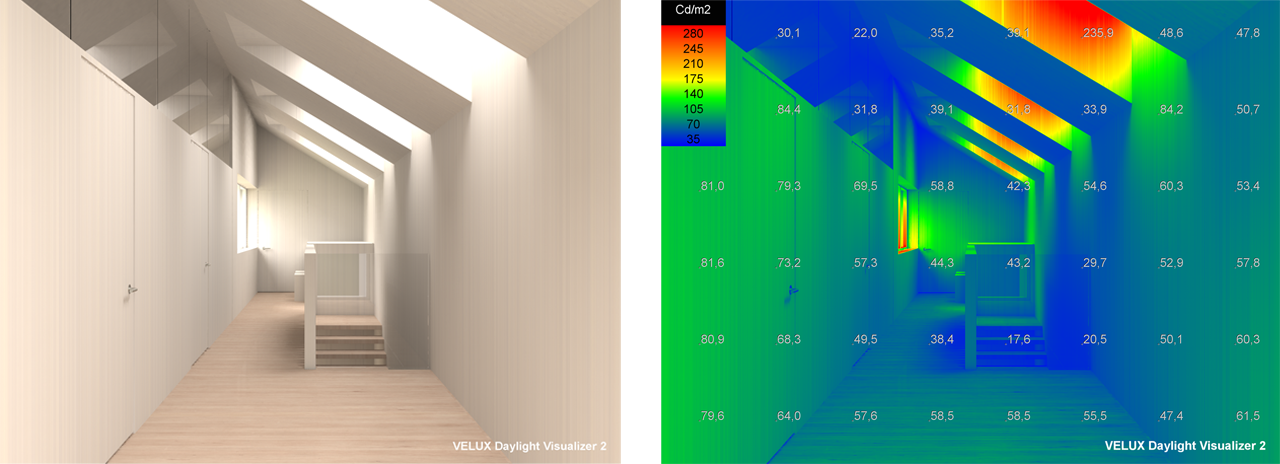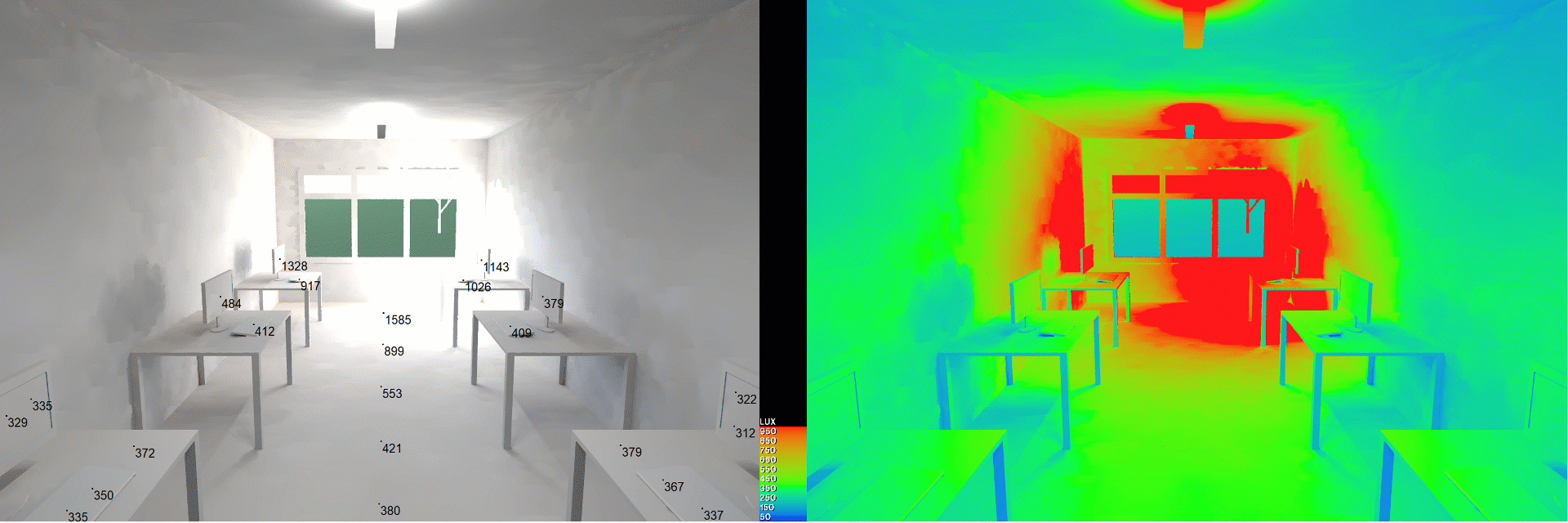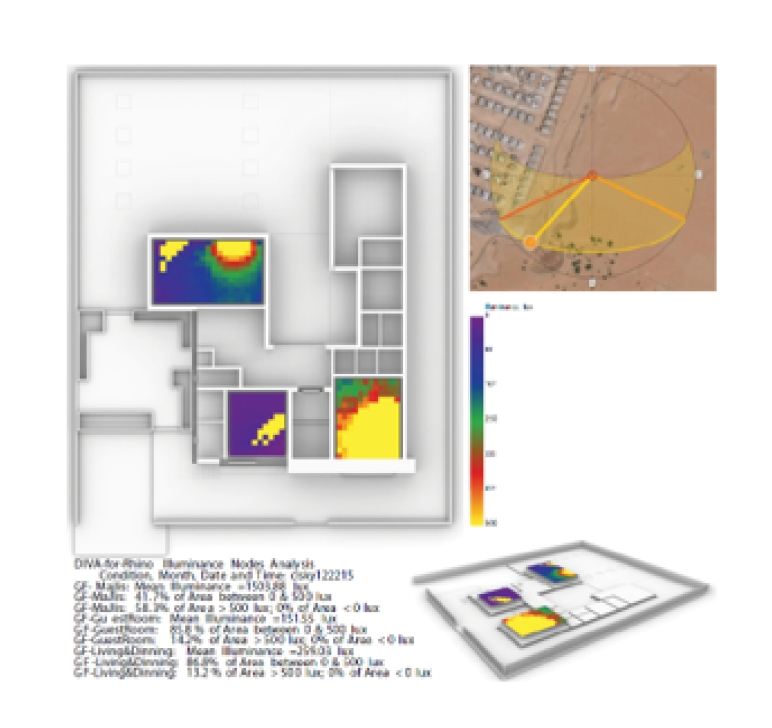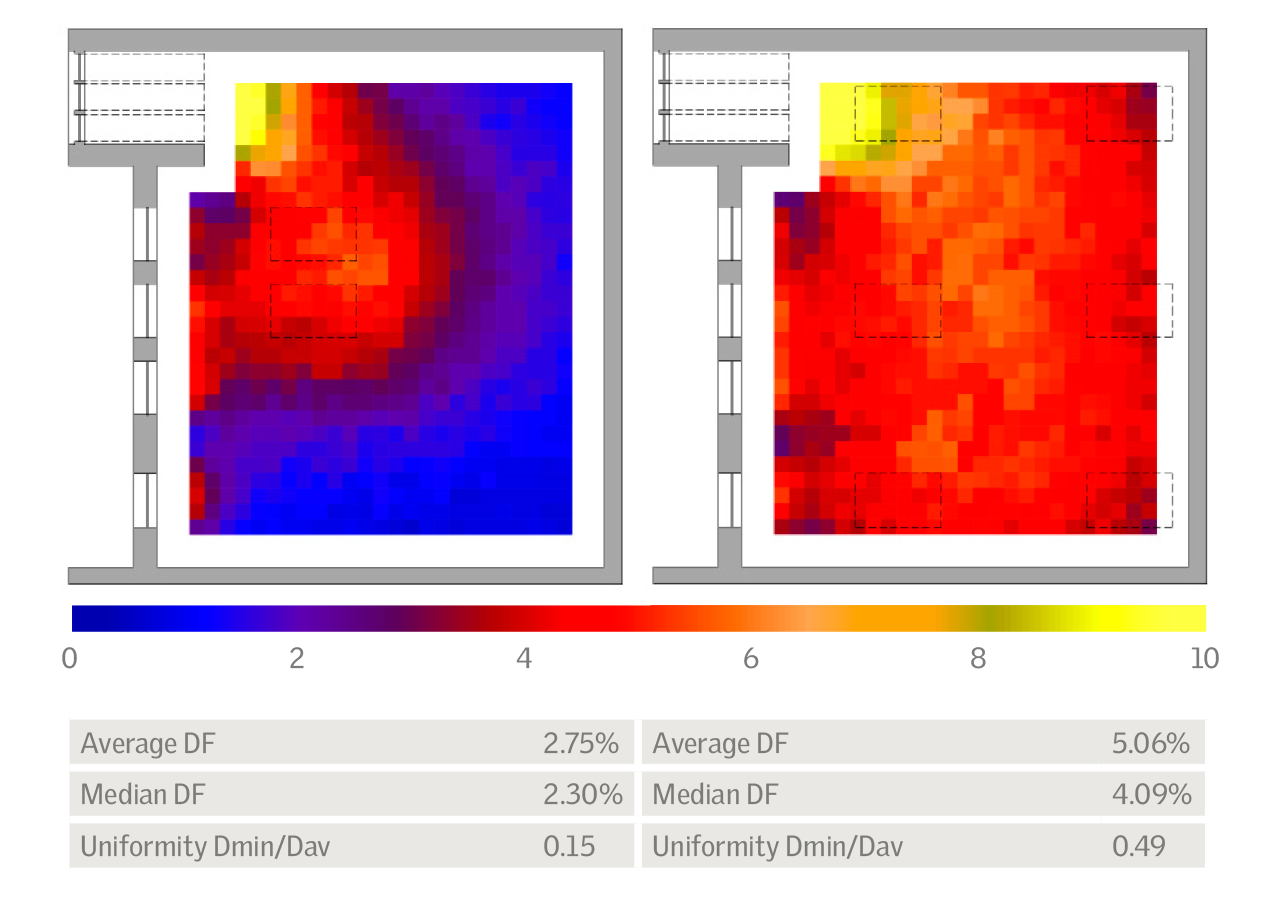
INSIGHT SEP 04, 2024
Illuminating Design with Daylight Simulations: Shaping the Future of Architecture and Urban Planning
In the realm of modern architecture and urban planning, the quest for sustainability and energy efficiency is unending. One of the most impactful, yet often overlooked, elements in this pursuit is the strategic use of natural light. Daylight simulations, an advanced technological tool, have emerged as a cornerstone in designing spaces that harmonize with the natural environment, enhancing both the aesthetic and functional aspects of buildings. This comprehensive discussion delves into the significance of daylight simulations, shedding light on how they contribute to more sustainable, energy-efficient, and human-centric design.
The Essence of Daylight Simulations
Daylight simulations are sophisticated computational methods used to analyze the quantity and quality of natural light within or around architectural spaces. By modeling the interactions of sunlight and daylight with the physical environment, architects and planners can predict how light behaves in different contexts, enabling informed design decisions that optimize natural illumination. This approach not only improves the visual and thermal comfort of indoor spaces but also significantly reduces the reliance on artificial lighting, leading to lower energy consumption and a smaller carbon footprint.
Enhancing Energy Efficiency
One of the paramount benefits of daylight simulations is their capacity to enhance energy efficiency. By maximizing the use of natural light, buildings can dramatically reduce their dependence on artificial lighting, which is often a major contributor to energy consumption. Daylight simulations help in designing windows, skylights, and other architectural elements in a way that optimizes daylight penetration while minimizing heat gain, striking a balance between illumination and thermal comfort.
Promoting Sustainability
Sustainability in architecture goes beyond energy efficiency, encompassing the well-being of occupants and the environmental impact of materials and construction processes. Daylight simulations play a crucial role in achieving sustainable design by allowing for the meticulous planning of natural lighting, which not only reduces energy usage but also enhances the psychological and physiological comfort of building users. Moreover, the strategic use of daylight can reduce the need for heating in colder months and cooling in warmer months, further contributing to the building's overall sustainability.

Dynamic Daylight Illuminance (lux) – Greyscale & False-color @Technical Insight by Liam Buckley
Improving Occupant Well-being
The benefits of natural light on human health and well -being are well-documented, ranging from boosting mood and productivity to regulating circadian rhythms. Daylight simulations enable designers to create spaces that provide ample natural light, improving the quality of life for occupants. By carefully analyzing and planning the distribution of daylight within a space, architects can ensure that all areas are adequately lit, reducing eye strain and enhancing the overall ambiance of the environment. This human-centric approach to design places occupant well-being at the forefront, making buildings not just functional, but also nurturing spaces.
Applications of Daylight Simulations in Modern Architecture
Daylight simulations have a wide range of applications in modern architecture and urban planning, proving instrumental in various stages of the design and development process.
Architectural Design
In architectural design, daylight simulations are used to inform decisions about the building's orientation, facade design, window placement, and material selection. By simulating different design scenarios, architects can visualize how changes affect daylight distribution and make adjustments to optimize natural lighting. This process ensures that the final design is both aesthetically pleasing and functionally aligned with sustainability goals.
Urban Planning
Daylight simulations extend beyond individual buildings, playing a crucial role in urban planning. They can be used to assess the impact of new developments on sunlight access for surrounding buildings and public spaces. This is particularly important in dense urban areas where the right to light can influence planning decisions. Simulations help in designing urban layouts that maximize sunlight exposure for streets and parks while mitigating the shading effects of high-rise structures.

Retrofitting Projects
For existing buildings, daylight simulations offer a pathway to retrofitting and renovations that enhance natural lighting without compromising the structure's integrity. By analyzing current daylight conditions, simulations can identify areas of improvement and guide the design of interventions, such as adding light shelves, reflective surfaces, or atriums, to increase daylight penetration and distribution.
The Synergy of Technology and Environmental Stewardship
Daylight simulations represent the confluence of technology and environmental stewardship in modern design practices. By leveraging advanced simulation tools, architects and planners can make data-driven decisions that align with the principles of sustainable development. This approach not only reduces the environmental impact of buildings but also elevates the quality of urban and architectural spaces, making them more livable and in tune with nature.
Challenges and Future Directions
While daylight simulations offer immense benefits, their implementation is not without challenges. Achieving accuracy in simulations requires detailed modeling of the building and its surroundings, which can be time-consuming and resource-intensive. Additionally, the dynamic nature of weather and changing seasonal patterns necessitates sophisticated simulation tools capable of accounting for these variables. As technology advances, however, these challenges are becoming increasingly surmountable, paving the way for more intuitive and user-friendly simulation software that can seamlessly integrate into the design process.

Daylight factor (DF) simulation in a classroom before (left) and after (right) renovation, including a 0.5m perimeter from the walls around the work plane. @VELUX
The future of daylight simulations lies in their integration with other sustainable design practices, such as energy modeling and biophilic design. By combining these approaches, architects and urban planners can create holistic environments that not only conserve energy but also promote connectivity to the natural world. Furthermore, the integration of daylight simulations with smart building technologies opens up new possibilities for dynamic lighting systems that adjust in real-time to optimize both energy efficiency and occupant comfort.
Conclusion: A Brighter Future with Daylight Simulations
Daylight simulations stand as a testament to the power of technology in advancing the goals of sustainable and energy-efficient design. By harnessing the natural resource of daylight, architects and urban planners can create spaces that are not only visually and thermally comfortable but also deeply aligned with environmental stewardship. As we move forward, the continued evolution and adoption of daylight simulation tools will undoubtedly play a pivotal role in shaping the built environment, making it more sustainable, resilient, and conducive to human well-being.
How ECOBUILD Can Help?
At ECOBUILD, we are committed to pioneering sustainable solutions in architecture and urban planning. Our expertise in daylight simulations enables us to offer design strategies that optimize natural lighting while minimizing energy consumption. With a focus on innovation and environmental responsibility, ECOBUILD collaborates with clients to transform their visions into reality, creating spaces that are not only efficient and sustainable but also enhance the quality of life for their occupants.
Let ECOBUILD be your partner in illuminating the path to a brighter, more sustainable future.
